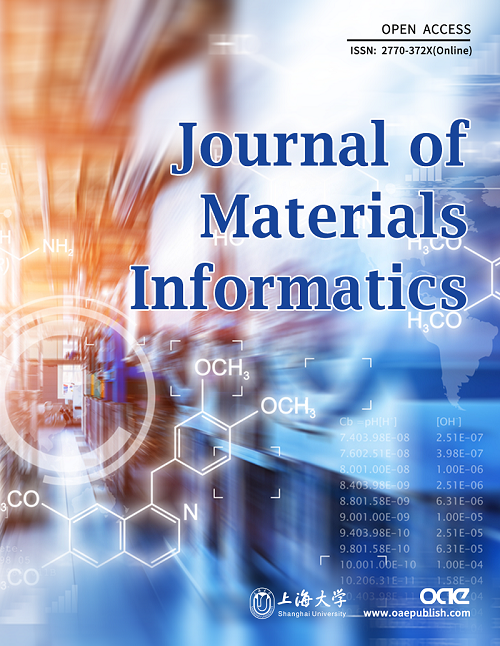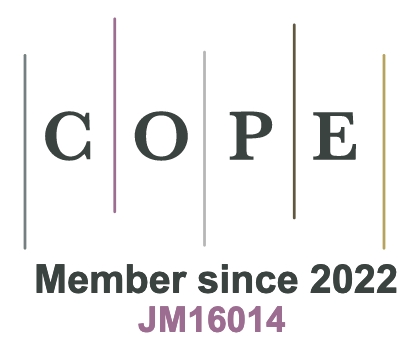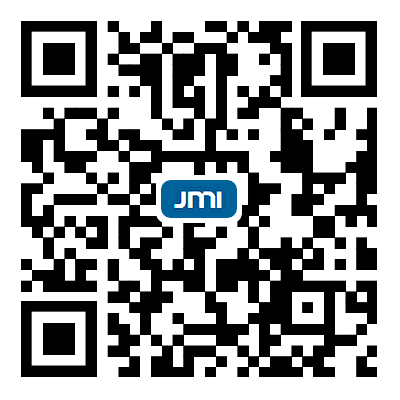REFERENCES
1. Chibani S, Coudert FX. Machine learning approaches for the prediction of materials properties. APL Mater 2020;8:080701.
2. Li D, Ru Y, Chen Z, Dong C, Dong Y, Liu J. Accelerating the design and development of polymeric materials via deep learning: current status and future challenges. APL Mach Learn 2023;1:021501.
3. Geng X, Wang F, Wu HH, et al. Data-driven and artificial intelligence accelerated steel material research and intelligent manufacturing technology. Mater Genome Eng Adv 2023;1:e10.
4. Shi R, Wang X, Song X, et al. Tensile performance and viscoelastic properties of rubber nanocomposites filled with silica nanoparticles: a molecular dynamics simulation study. Chem Eng Sci 2023;267:118318.
5. Yagyu H. Coarse-grained molecular dynamics simulation of the effects of strain rate on tensile stress of cross-linked rubber. Soft Mater 2015;13:263-70.
6. Frankland SJV, Harik VM, Odegard GM, Brenner DW, Gates TS. The stress-strain behavior of polymer-nanotube composites from molecular dynamics simulation. Compos Sci Technol 2003;63:1655-61.
7. Odegard GM, Jensen BD, Gowtham S, Wu J, He J, Zhang Z. Predicting mechanical response of crosslinked epoxy using ReaxFF. Chem Phys Lett 2014;591:175-8.
8. Chung I, Im S, Cho M. A neural network constitutive model for hyperelasticity based on molecular dynamics simulations. Numer Meth Eng 2021;122:5-24.
9. Lee J, Wang H, Kim JH, Shin H. Importance of cohesive failure mode in fracture toughness enhancement of polymer nanocomposites with covalent grafting: a multiscale study. Compos Part B Eng 2024;279:111462.
10. Wang H, Lee J, Kim JH, Shin H. Multiscale strategy to predict the fracture toughness and crack extension behavior of ozone-functionalized carbon nanotube/epoxy nanocomposites. Chem Eng J 2023;465:142985.
11. Chen Q, Huang W, Duan P, et al. Manipulating the mechanical properties of cis-polyisoprene nanocomposites via molecular dynamics simulation. Polymer 2022;256:125233.
12. Chen Q, Zhang Z, Huang Y, et al. Structure-mechanics relation of natural rubber: insights from molecular dynamics simulations. ACS Appl Polym Mater 2022;4:3575-86.
13. Le Cam JB, Huneau B, Verron E, Gornet L. Mechanism of fatigue crack growth in carbon black filled natural rubber. Macromolecules 2004;37:5011-7.
14. Trabelsi S, Albouy P, Rault J. Stress-induced crystallization around a crack tip in natural rubber. Macromolecules 2002;35:10054-61.
15. Shen L, Qian Q. A virtual sample generation algorithm supporting machine learning with a small-sample dataset: a case study for rubber materials. Comput Mater Sci 2022;211:111475.
16. Lockner Y, Hopmann C, Zhao W. Transfer learning with artificial neural networks between injection molding processes and different polymer materials. J Manuf Process 2022;73:395-408.
17. Chen Z, Li D, Liu J, Gao K. Application of Gaussian processes and transfer learning to prediction and analysis of polymer properties. Comput Mater Sci 2023;216:111859.
18. Kim Y, Kim Y, Yang C, Park K, Gu GX, Ryu S. Deep learning framework for material design space exploration using active transfer learning and data augmentation. npj Comput Mater 2021;7:609.
19. Akdemir A. Research on task discovery for transfer learning in deep neural networks. In: Proceedings of the 58th Annual Meeting of the Association for Computational Linguistics: Student Research Workshop. Association for Computational Linguistics; 2020. pp. 33-41.
20. Wu X, Manton JH, Aickelin U, Zhu J. A Bayesian approach to (online) transfer learning: theory and algorithms. Artif Intell 2023;324:103991.
21. Zhang Y, Fang Y, Li L, et al. Thermal stability prediction of copolymerized polyimides via an interpretable transfer learning model. J Mater Inf 2024;4:8.
22. Xu P, Ji X, Li M, Lu W. Virtual sample generation in machine learning assisted materials design and discovery. J Mater Inf 2023;3:16.
23. Li D, Liu J, Liu J. NNI-SMOTE-XGBoost: A novel small sample analysis method for properties prediction of polymer materials. Macromol Theory Simul 2021;30:2100010.
24. Hu A, Huang Y, Chen Q, et al. Glass transition of amorphous polymeric materials informed by machine learning. APL Mach Learn 2023;1:026111.
25. Huang Y, Chen Q, Zhang Z, et al. A machine learning framework to predict the tensile stress of natural rubber: based on molecular dynamics simulation data. Polymers 2022;14:1897.
26. Radford A, Metz L, Chintala S. Unsupervised representation learning with deep convolutional generative adversarial networks. arXiv. [Preprint.] Jan 7, 2016 [accessed 2024 Aug 14]. Available from: https://arxiv.org/abs/1511.06434.
27. Nguyen A, Dosovitskiy A, Yosinski J, Brox T, Clune J. Synthesizing the preferred inputs for neurons in neural networks via deep generator networks. In: NIPS’16: Proceedings of the 30th International Conference on Neural Information Processing Systems. Curran Associates Inc.; 2016. pp. 3395-403. Available from: https://dl.acm.org/doi/abs/10.5555/3157382.3157477. [Last accessed on 14 Aug 2024]
28. Zhu JY, Krähenbühl P, Shechtman E, Efros AA. Generative visual manipulation on the natural image manifold. arXiv. [Preprint.] Dec 16, 2018 [accessed 2024 Aug 14]. Available from: https://arxiv.org/abs/1609.03552.
29. Denton E, Chintala S, Szlam A, Fergus R. Deep generative image models using a Laplacian pyramid of adversarial networks. In: Proceedings of the 28th International Conference on Neural Information Processing Systems - Volume 1. Cambridge, MA, USA: MIT Press; 2015. pp. 1486-94. Available from: https://dl.acm.org/doi/10.5555/2969239.2969405. [Last accessed on 14 Aug 2024]
30. Chen Q, Liu Z, Huang Y, et al. Predicting natural rubber crystallinity by a novel machine learning algorithm based on molecular dynamics simulation data. Langmuir 2023;39:17088-99.
31. Arjovsky M, Bottou L. Towards principled methods for training generative adversarial networks. arXiv. [Preprint.] Jan 17, 2017 [accessed 2024 Aug 14]. Available from: https://arxiv.org/abs/1701.04862.
32. Kingma DP, Welling M. Auto-encoding variational bayes. arXiv. [Preprint.] Dec 10, 2022 [accessed 2024 Aug 14]. Available from: https://arxiv.org/abs/1312.6114.
33. Kulkarni TD, Whitney WF, Kohli P, Tenenbaum JB. Deep convolutional inverse graphics network. arXiv. [Preprint.] Jun 22, 2015 [accessed 2024 Aug 17]. Available from: https://arxiv.org/abs/1503.03167.
34. Gregor K, Danihelka I, Graves A, Rezende DJ, Wierstra D. DRAW: a recurrent neural network for image generation. arXiv. [Preprint.] May 20, 2015 [accessed 2024 Aug 14]. Available from: https://arxiv.org/abs/1502.04623.
35. Sønderby CK, Raiko T, Maaløe L, Sønderby SK, Winther O. Ladder variational autoencoders. In: NIPS’16: Proceedings of the 30th International Conference on Neural Information Processing Systems. Red Hook, NY, USA: Curran Associates Inc.; 2016. pp. 3745-53. Available from: https://dl.acm.org/doi/abs/10.5555/3157382.3157516. [Last accessed on 14 Aug 2024]
36. Im DI, Ahn S, Memisevic R, Bengio Y. Denoising criterion for variational auto-encoding framework. AAAI 2017;31:1.
37. Wang X, Liu H. Data supplement for a soft sensor using a new generative model based on a variational autoencoder and Wasserstein GAN. J Process Control 2020;85:91-9.
38. Ohno H. Auto-encoder-based generative models for data augmentation on regression problems. Soft Comput 2020;24:7999-8009.
39. Kulosa M, Neumann M, Boeff M, Gaiselmann G, Schmidt V, Hartmaier A. A study on microstructural parameters for the characterization of granular porous ceramics using a combination of stochastic and mechanical modeling. Int J Appl Mechan 2017;09:1750069.
40. Díaz-montiel P, Escalona-galvis L, Venkataraman S. Kriging and dimension reduction techniques for delamination detection in composites using electrical resistance tomography. Eng Optim 2023;55:19-34.
41. Kookalani S, Cheng B, Torres JLC. Structural performance assessment of GFRP elastic gridshells by machine learning interpretability methods. Front Struct Civ Eng 2022;16:1249-66.
42. Daya AA, Bejari H. A comparative study between simple kriging and ordinary kriging for estimating and modeling the Cu concentration in Chehlkureh deposit, SE Iran. Arab J Geosci 2015;8:6003-20.
44. Lundberg S, Lee SI. A unified approach to interpreting model predictions. arXiv. [Preprint.] Nov 25, 2017 [accessed 2024 Aug 14]. Available from: https://arxiv.org/abs/1705.07874.








